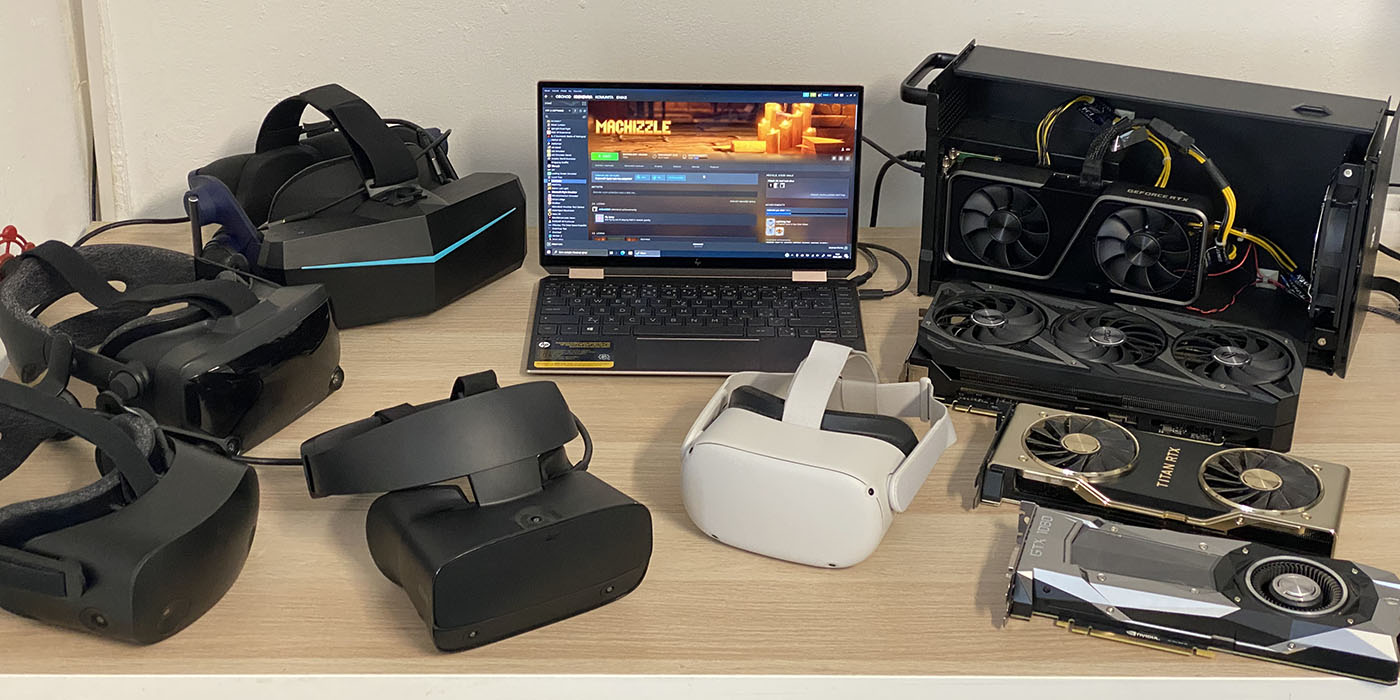
Let’s estimate the state of the market first. There are 3 major players when it comes to VR - Meta, PSVR and SteamVR. We can estimate Meta sales from Meta Quest app download on the Google Play Store or App Store on iOS devices, as you need an app to activate the device. Sensor Tower is an analytics company tracking those downloads , and says the app was downloaded 10.3 million times in 2022 and 23 million times total downloads. This means there are 23 million Quest owners at max. Likely less, as some of those downloads may be redownloads, people switching Android <-> iOS, borrowed units, second hand units and people who doesn’t have VR at all. Your guess is as good as mine, but we know the number is not higher than 23 million.
Second is PSVR, where Sony actually published some numbers. The latest was 5 million units as of the end of 2019. Given the fact PSVR was launched in 2016 and Sony announced every million units sold, if they reached 6 million we would hear about it. So let’s count 5 million. Many of those units are collecting dust now.

SteamVR can be estimated using the Steam Hardware Survey. The December 2022 data shows 2.03% of Steam users have a VR headset, with Steam 130 million user base, that means 2.6 million of PCVR users. However 44% of those are Oculus Quest users which we already counted, that remains 1.5 million of active unique users. This number is likely a bit higher, as sometimes Steam doesn’t detect VR devices.
All in all summarized, there are not more than 30 million VR users world wide. The number is likely between 10-20 millions. Now - on January 2023. However, in 2020, before Quest2 launched and took over, the number was likely less than 10 million.
Estimating market size is a bit more difficult, in consumer space Meta Quest developer revenues have surpassed 1.5B, likely order of magnitude more than competitors. Maybe let's predict the consumer software market at 2B? Estimating enterprise revenue is harder. Most analyst guess the entire VR market is 5-20bn right now.
Predictions of the past
- CCS Insight predicted in 2016 that there will be 99 million devices in 2021, missing the mark by an order of magnitude. 60 million of those were supposed to be smartphone based VR/AR devices, something that completely died a few years ago.

- IDC (article via VRScout) predicted in the VR market will be 162$ billions, once again powered by smartphone VR. IDC was orders of magnitude wrong.
- Maybe let’s try Bloomberg (behind paywall, sorry)? Their estimation - by 2020, people will buy 42 millions of high end VR units. Once again, wrong by order of magnitude.

- What about Goldman Sach’s. A report that has been widely cited by Forbes and leaked by a reddit user back in 2016 ( original thread ) Their prediction for 2022? 40-100 milion units. Making a huge range to cover their prediction and still being vastly wrong.

- Greenlight insights (via Variety ), their forecast was 2021 VR market will be 75 billion. Wrong.
- At last SuperData. They estimated consumer VR software revenue for 2020 to be 17.9 billion. This was wrong by order of 2 magnitudes. In fact it was estimated at 3.6 billion in 2017, and we’re not even there yet.

But, why did they failed?
I hope this puts a bit in perspective, that these analysts and journalists often don't even know what is going on or how to predict the future. I don't only take these predictions with a grain of salt, but rather as a complete guesses, out of crystal ball, meaning absolutely nothing. One thing that can be pointed out is how many of those analyses predicted a bright future for smartphone based VR. Smartphone-based VR was a doomed idea from the start. For a good VR experience you need to solve a bunch of technical challenges - like optical calibration, low persistence displays or accurate tracking - that are near impossible on cell phones, unless those phones are built for VR. So while Google shipped more than 5M of cardboard units, Samsung shipped more than a 1M GearVRs, people used them a few times and then never returned - because the experience wasn’t good. We in the VR industry knew that and I often argued that smartphone VR shouldn’t be called VR at all. Analysts didn’t know and predicted a bright future.
Second thing is that you don't know what will be built in the future (unless you’re building it), but that determines the market. Oculus Quest was a huge step forward for the VR industry that no one foresaw from the analysts. What’s the next step? Nobody knows ;) Maybe someone will make a consumer AR headset. Maybe we will drive the price of standalone VR even lower (100-200 usd ranges), opening to new audiences. Maybe generative AI will revolutionize content creating, making tons of high quality content available, driving more adoption. I dare say, we might have an idea about what's in the making, because we’re deeply passionate about XR. But those analytics companies?
Anyway, I’m Jan, Leader at iNFINITE Production. If you want to know more insights from me, feel free to connect with me on LinkedIn, follow me on Twitter or simply reach out with any questions you might have. And if you looking for studio of veteran XR developers to collaborate with, let's talk!




